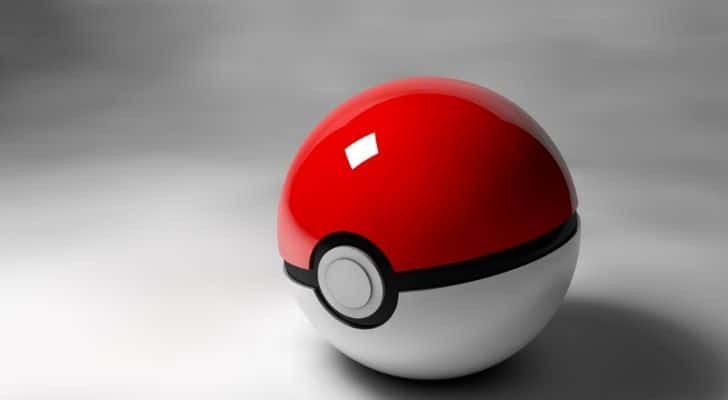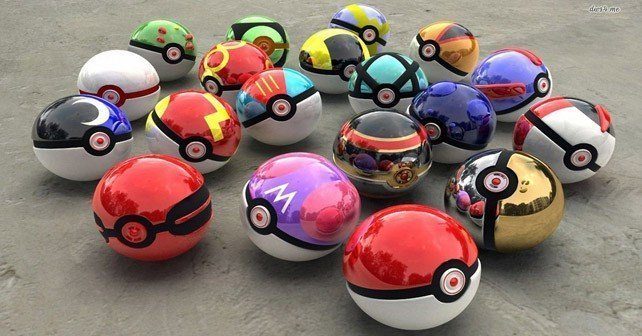If you’ve ever wondered where Poké Balls come from, who makes them and how they work, you’re not the only one!
Check out these interesting facts about Poké Balls to increase your Pokémon knowledge.
Those of you who are true died-hard Pokémon fans will most likely know the answer to these questions already but for those of you don’t know – let me warn you it’s no simple matter.
Poké Ball Invention

The invention of the Poké Ball pre-dates the canon by a period of time between 400 – 700 years.
In the modern-world of Pokémon, Poké Balls are created mainly by the companies Silph Co. and Devon Corp.
However, before such a time of mechanical mass-production was possible, Poké Balls were originally made by Poké Ball experts from a strange fruit native to the Johto region called an Apricorn.
One such Poké Ball expert that the player can encounter in the games is Kurt.
Kurt the Poké Ball Expert

Kurt resides in the Johto region and can be encountered by the player on the games Gold, Silver, Crystal as well as HeartGold & SoulSilver.
In the games, Kurt will offer to make the player Poké Balls so long as the player brings him Apricorns.
There are seven different colors of Apricorn that the player can bring Kurt, these being Green, Red, Blue, Black, Pink, White & Yellow.
With these Kurt can craft respectively a Friend Ball, Level Ball, Lure Ball, Heavy Ball, Love Ball, Fast Ball & Moon Ball.
This process is done by hollowing out the Apricorn and fitting it with specialist energy-capturing devices.
Poké Balls such as Sam’s red twist-top Poké Ball that featured in the opening of the movie Celebi: Voice of The Forest, 40 years before present day, or the ghost Captain’s balls in the episode A Shipful of Shivers over 300 years ago, fit Kurt’s description of handmade Poké Balls to the player.
Poké Balls before Mass Production

It’s from Poké Ball experts like Kurt that Poké Balls came from before mass-production, but what about before that?
In the Pokémon Animated Series, there have been several artifacts and relics – some similar to the conventional Poké Ball – that have contained Pokémon inside.
In the episode The Ancient Puzzle of Pokémopolis there were three ancient artifacts discovered in Pokémopolis that contained a giant Alakazam, Gengar and Jigglypuff.
In the episode Battling The Enemy Within! Ash and co. discovered a stone orb similar in size and appearance to a modern Poké Ball within the tomb of the King of Pokélantis. It was rumored that the King of Pokélantis used this orb to trap the legendary Pokémon HO-Oh inside.
As mentioned earlier, the modern Poké Balls are mass-produced by the two companies Silph Co. and Devon Corp. Silph Co. is credited with the creation of the modern Poké Ball, the Great Ball and the Ultra Ball.
Whereas Devon Corp. are attributed with creating the Luxury Ball, Premier Ball, Nest Ball, Dive Ball, Net Ball, Timer Ball and Repeat Ball.
These balls are made from a Metal Shell, a Locking Bar and a Release Button.
Poke Ball Mechanics & Information

Roughly about the size of an orange, the modern Poké Ball can be shrunk to the size of a golf ball by pressing the Release Button, which comes in handy for storing many of them in a small space.
Your average normal Poké Ball weighs 5.53 ounces, is 2.5 inches in diameter and 7.85 inches in circumference.
A Poké Ball stores and contains Pokémon through the refraction of light energy within the Poké Ball.
This comes from an energy source placed at the bottom which refracts light off a series of small reflecting glass panels held to the inside of the Poké Ball’s Metal Shell by copper pins.
The light energy refracted from these glass panels is what is able to preserve the energy state of the Pokémon within the Poké Ball.
So there you have it, the origins of the ancient Poké Ball still remain a mystery somewhat, although we know that in more recent history Poké Balls were designed by Poké Ball experts out of the Apricorn fruit.
We also know that in modern-day Pokémon, Poké Balls are made largely by the two companies Silph Co. and Devon Corp.
And now we also know that the complex process of light-refraction is what is used to store the energy of a Pokémon within the Poké Ball.
I hoped you enjoyed this one and found it as interesting as I did, thanks for reading folks!

















